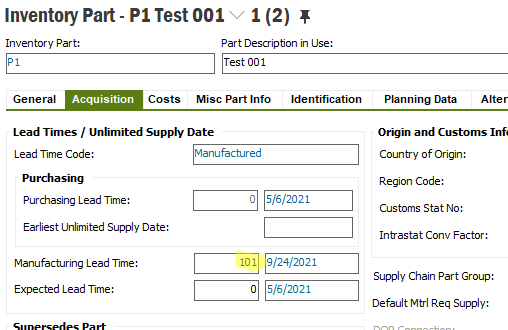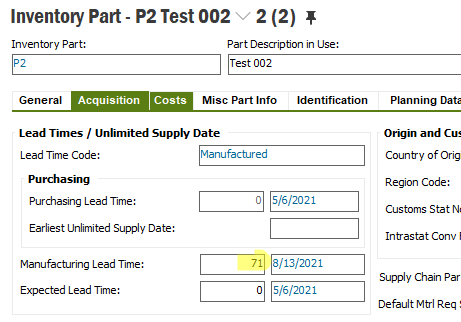Hi all,
Our current Manufacturing Lead Times (as found in ‘Inv. Part’ - ‘Acquisition’) are not accurate.
This is because the calculation used by IFS totals all the values we’ve specified, including the queue times (entered manually) for each work center in the routing of a part. This formula doesn’t seem correct.
Case:
Consider part, P, which has an MLT of 100 days.
P could have 3 operations, at 3 different work centers, with 3 different queue times.
WC1 - (queue time against the calendar in working days) = 10
WC2 = 20
WC3 = 70
In isolation, the values for each work center are true. For example, if anther part, P2, has only WC3 in its routing, it may need to wait 70 days based on the loading of the resources to begin work.
However, the original part, P, routed through WC1- 3 doesn’t have a lead-time of 100 days. Since the 70 working days of queue time is greater than the preceding operations, this would absorb the wait time for the 2 prior operations. So, the actual queue time for P would be 70 not 100.
The problem is IFS’s MLT calculation performs a sum of for queue times meaning they end up bloated.
How can this be amended? Is the way we are understanding queue times (and how to state them) correct?
cheers,










